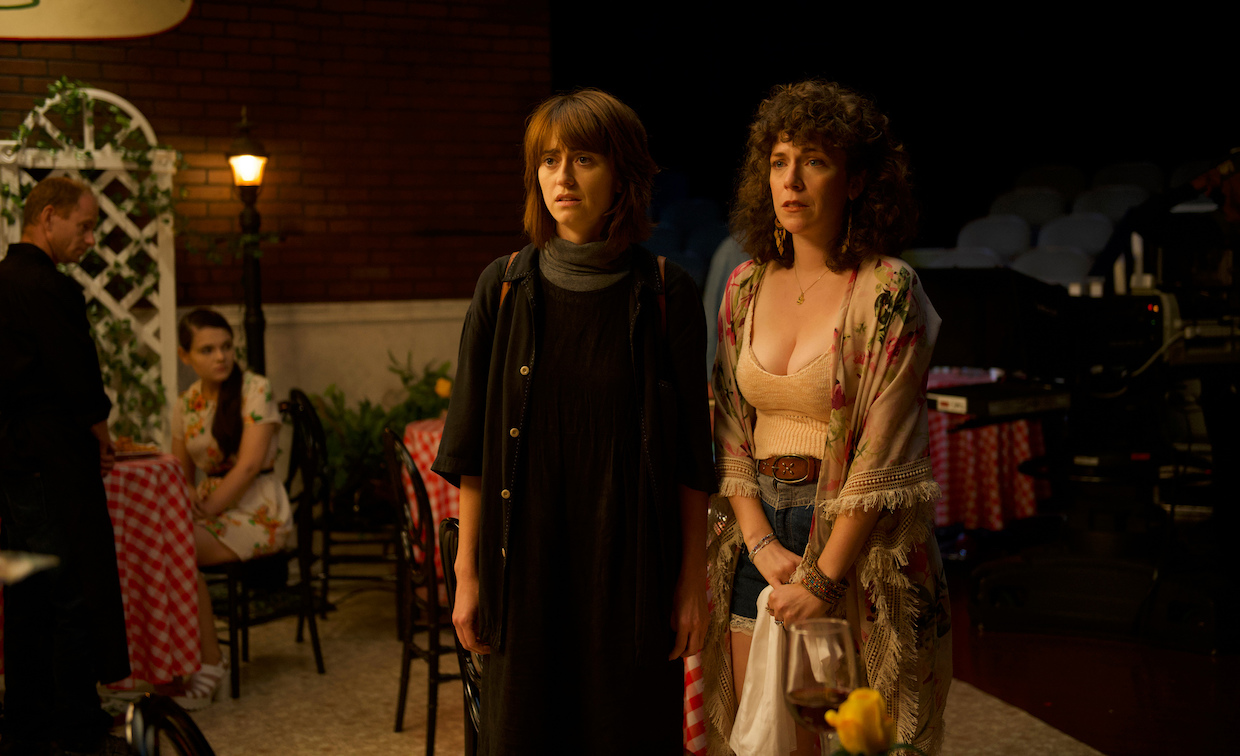 Back to selection
Back to selection
“I Lost My DP To a Fancier Job”: Director Hannah Pearl Utt | Before You Know it
 Hannah Pearl Utt and Jen Tullock in Before You Know It (photo by Anna Kooris)
Hannah Pearl Utt and Jen Tullock in Before You Know It (photo by Anna Kooris) Whenever directors watch their own films, they always do so with the knowledge that there are moments that occurred during their production — whether that’s in the financing and development or shooting or post — that required incredible ingenuity, skill, planning or just plain luck, but whose difficulty is invisible to most spectators. These are the moments directors are often the most proud of, and that pride comes with the knowledge that no one on the outside could ever properly appreciate what went into them.
So, we ask: “What hidden part of your film are you most privately proud of and why?”
The hidden part of my film I’m most proud of is magic. Magic played a really important role in making Before You Know It (“it’s called good producing, Hannah, but sure, you can give The Universe credit”).
Two weeks before I was supposed to fly out to New York to begin soft prep, I lost my DP to a fancier job. You can imagine how I was doing (screaming in the shower). My producers assured me not to fret, we would find the right person. At that point I had already interviewed about twenty extremely skilled and experienced DPs, but none of them felt right, so I was dubious. With no real choice but to take my producers’ advice, I tried to have faith in the process (it always works out the way it’s supposed to, right?) and focus on something within my immediate control, like finding a subletter. Then magic happened.
A woman I’d met through a Facebook group for artists seeking housing, was interested in seeing my apartment. With friends’ horror stories about crazy subletters ringing in my ears, amplified by my anxiety over the movie, I felt this woman needed further vetting. She mentioned she’d been staying with a friend in Hollywood—a DP. “What’s his name?” (“If this guy doesn’t come up in a Google search, I’ll know she’s a con-artist”), and then there he was: elegant photography; moving, human stories; and the lighting, holy sh** the lighting. I gasped. Jon Keng. His number was listed on his website. I cold-called him. The woman passed on my apartment; Jon and I met the next day.
Up until that point, I had only ever worked with DPs who I knew really well and whose instincts I could therefore trust, or people within an environment designed for experimentation (like the Directors Lab). I was worried about developing the kind of trust I knew it would require to get a new DP on board with my process oriented approach; I need my collaborators to be seeking opportunities to “trade up” on set (that’s how Bob Elswit referred to PTA’s agility on set and it blew my mind) and open to the possibility of changing the plan.
When we sat down together for coffee, the first thing Jon needed me to know was that for him, storyboards and shot lists were useful tools, but that ultimately what we would be trying to capture was the story and the performance and you never really know how best to do that until you’re there. I pinched myself. Had I really met a DP with lighting and framing that made me gasp, whose number one priority was capturing the performance and creating enough flexibility in our planning to leave room for MAGIC?!
The fact that my producers believed me when I told them Jon was the guy—despite the fact that he was not a New York local, at that point was not in the union, and didn’t have any features he could show us (he had just shot three but all of them were in post)—was its own kind of magic. The fact that they were able to make it work despite the aforementioned obstacles, that’s just good producing.
